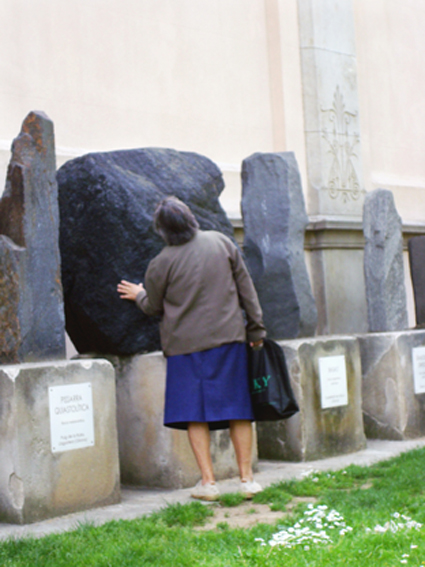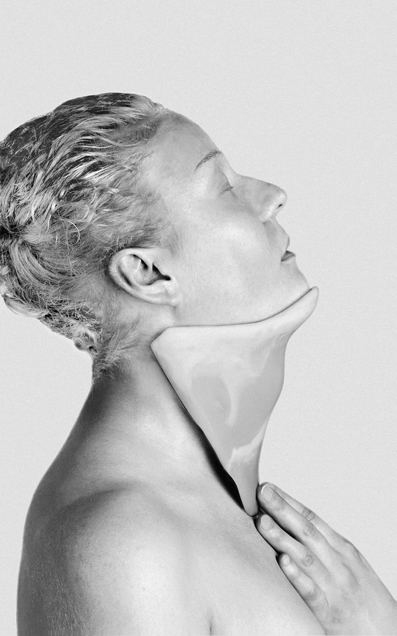Issue 35
Nina Nowak
in place

The method of white torture is based on deprivation of all sensual stimuli: a white room, white food, special gloves to avoid any sensation of touch, no sounds, no colours make us lose our identity without leaving traces of physical harm faster than any other method of torture.
As humans we need to use our senses to know who we are. There is necessity for using our senses but also for being in touch with a material surrounding. The senses are not going into nowhere but directed toward the material worId: things are the main setup for to us feel ourselves in place.
Sensory perception is important for us and for defining ourselves. But it is also the materiality surrounding us that helps human beings to construct meaning within the world. How we construct our surrounding is a direct reflection of how we think we are in this world: Everything that surrounds us and that has been created by humans bears layers of meaning inside. A hidden structure of cultural, social belief systems, values, ideas and norms within a society are transferred into materiality. [1]
The body itself is a battlefield of all taboos, norms and boundaries and it has been
undergoing various shifts during centuries within western culture. Changing ideas about the body are connected to things, what can be said and cannot be said. They are mirrored in objects. Nowadays one can maybe not identify the meaning of the strange precious piece of jewellery of the women in the renaissance painting as a very functional object to get rid of fleas. What kind of things will be created by norms and values we do not know now in the future?
The border between the soul-filled container wrapped in skin mixes and mingles with the material outside. As the surrounding changes so does the idea of what is within the norm and what is outside. What needs to be enhanced to act properly and take part within society and what not. With advancements in medical techniques, the acceptance of how and when the inanimate material and the human body meet shifts. Freud's "Mängelwesen Mensch" is an always badly prepared figure for the outside world. On the other hand the image of the former "cripple" partly becomes today a "Superhuman", more fit and better adapted for the needs of an achievement-oriented soctiety .[2]
Looking closer at the sense of touching and feeling as one important base of feeling
ourselves one could also look at one very common phenomena everybody has observed in her life. Noses of lions and horses made of stone, flanking castles and palaces, the shining surfaces of stone carved sculptures standing in public spaces are polished by decades of touch. Adults as well as children seem to have the desire to touch things in order to understand them.
This inner drive does not have to be conscious, it can appear as a direct reaction towards the material world. The touch itself is the most obvious sign of the human need for the
connection and reassurance which lies in our material surrounding. In that sense everything that surrounds us can be seen as extensions of ourselves but at the same time it is the surrounding that creates us as ourselves.

[1] The reciprocal relationship between the inanimate world and human beings has been described in many theories. The thing as an active agent from an anthropological point of view and its impact on our daily life and routines is the topic of Daniel Millers book "Stuff" (2005). The author refers to the power of the inanimate world with what he calls the "humility of things".
[2] Karin Harrasser, author of "Körper 2.0" (2014), draws a direct connection between the prosthesis and how it finds place within a neoliberal society. In the image of the "Superhumans" Harasser analyses evolutionist thinking going hand in hand with techno-fetishism, within a social structure of hierarchy that is based on enhancement and individual self-tuning.

o.T., 2013
untitled, c-print, 13x17cm, 2013
Prothesen, print, 40x55cm, 2015
text written for texted archive, 2017